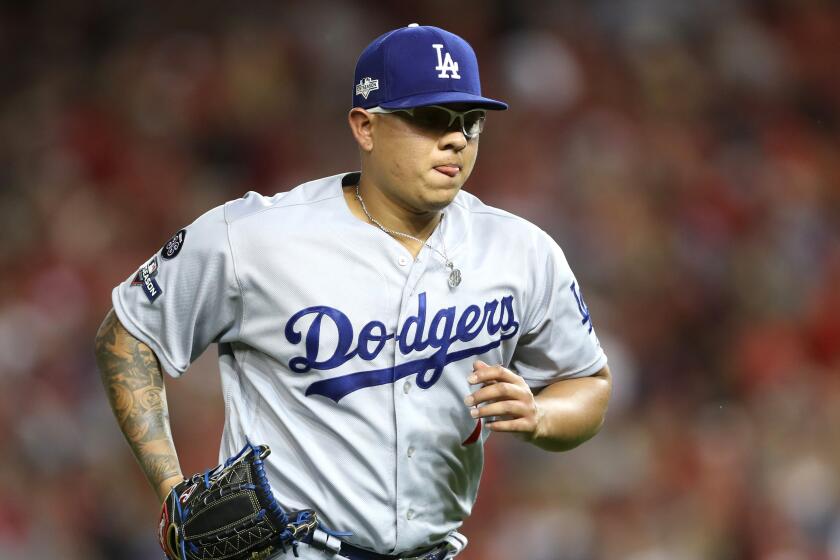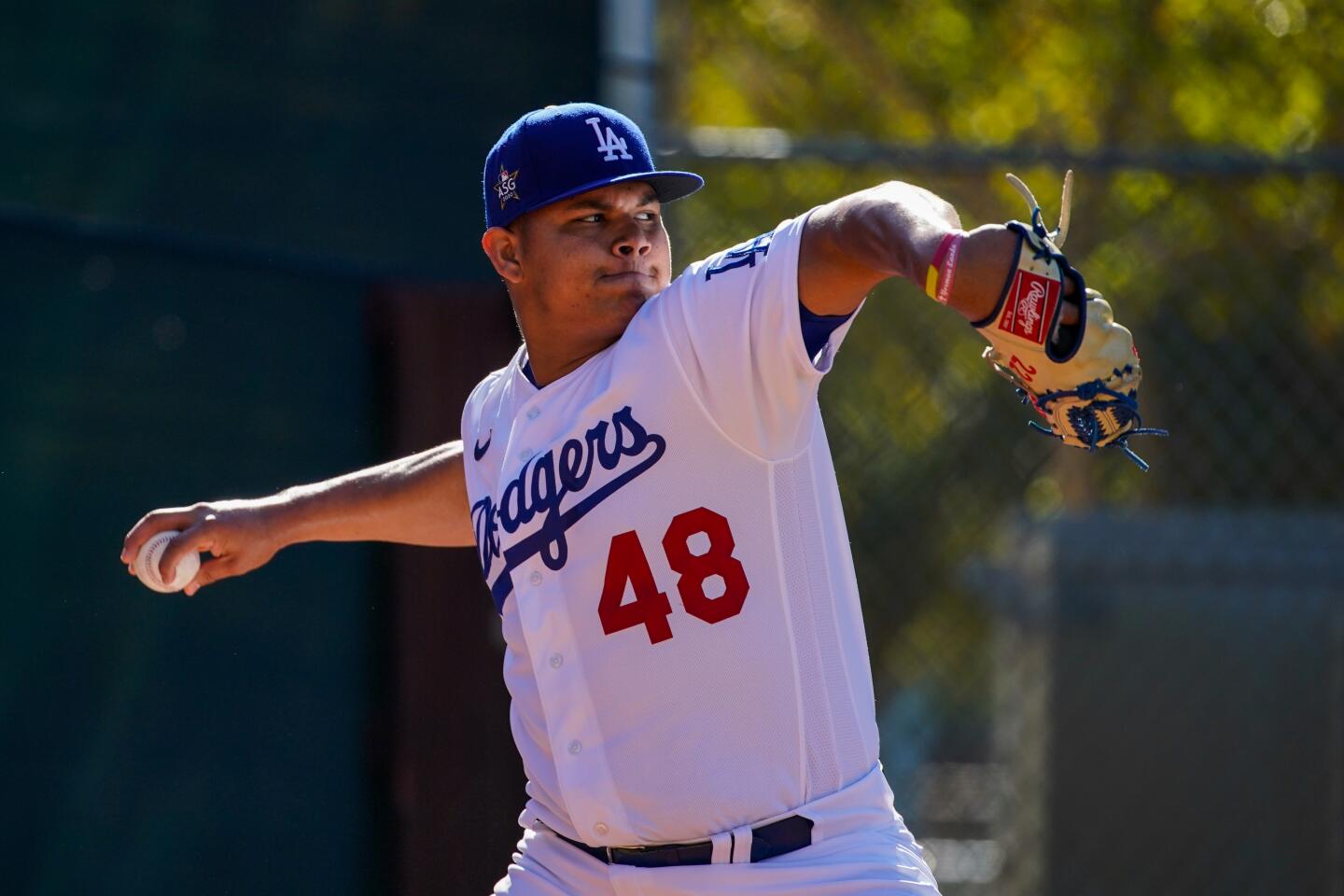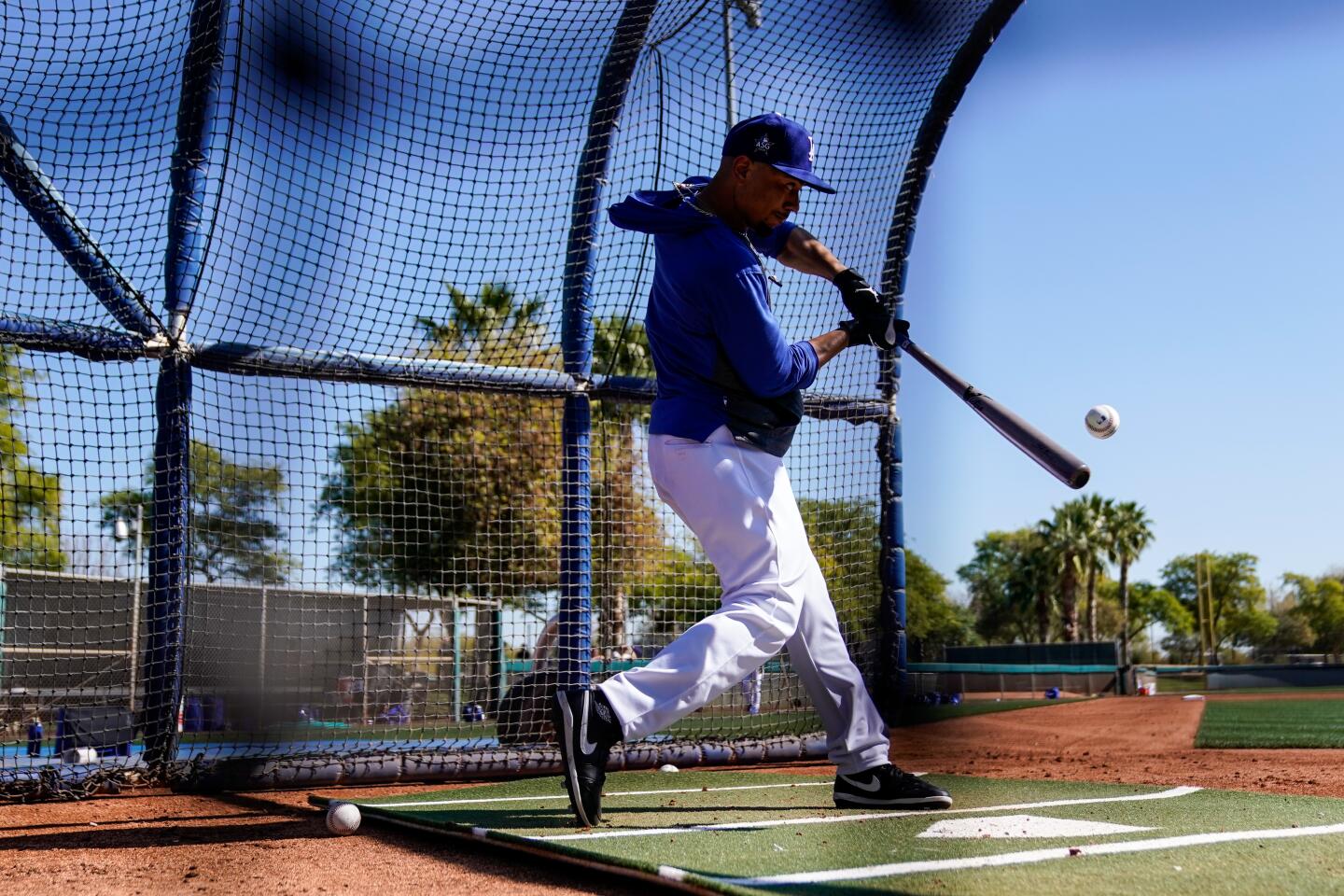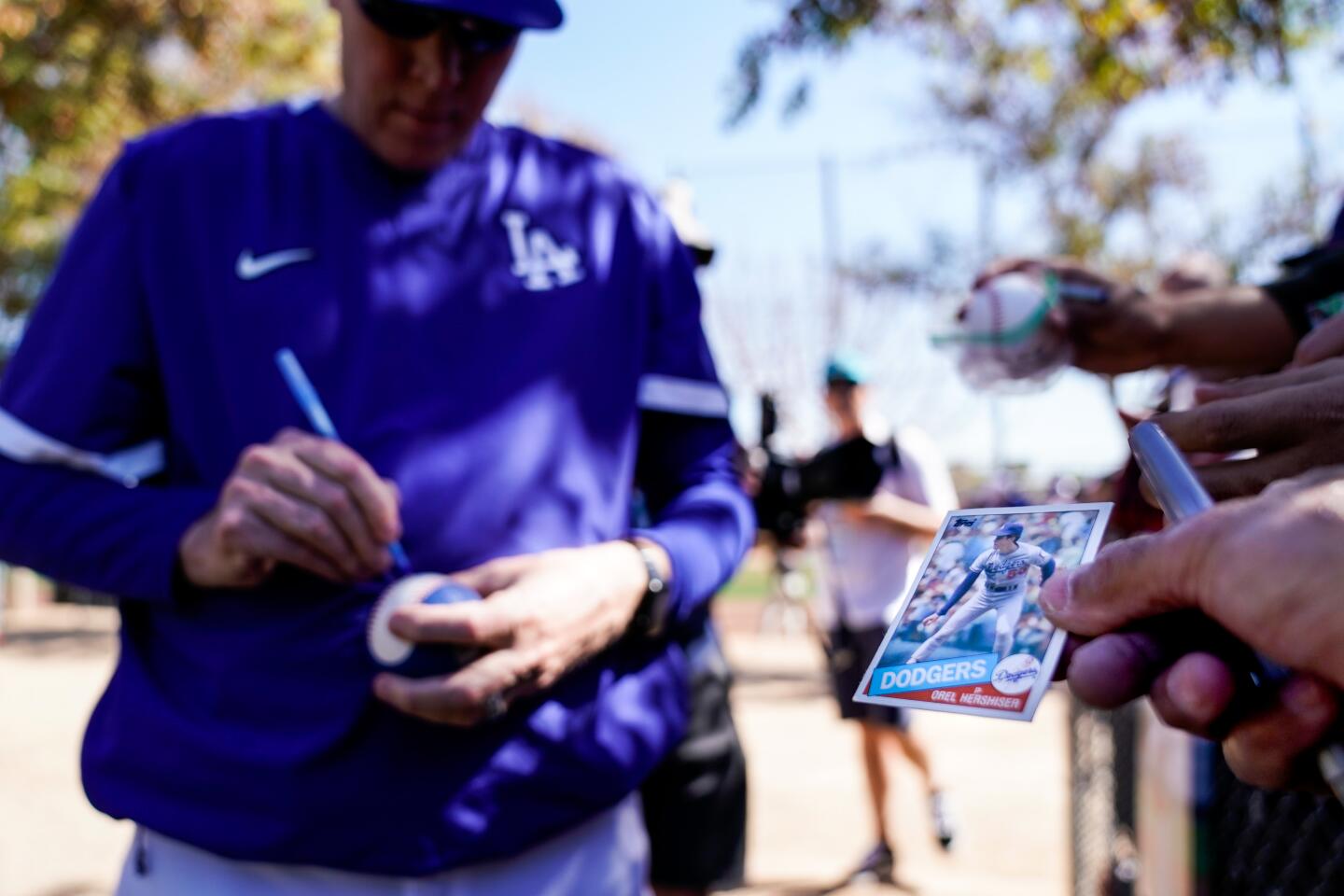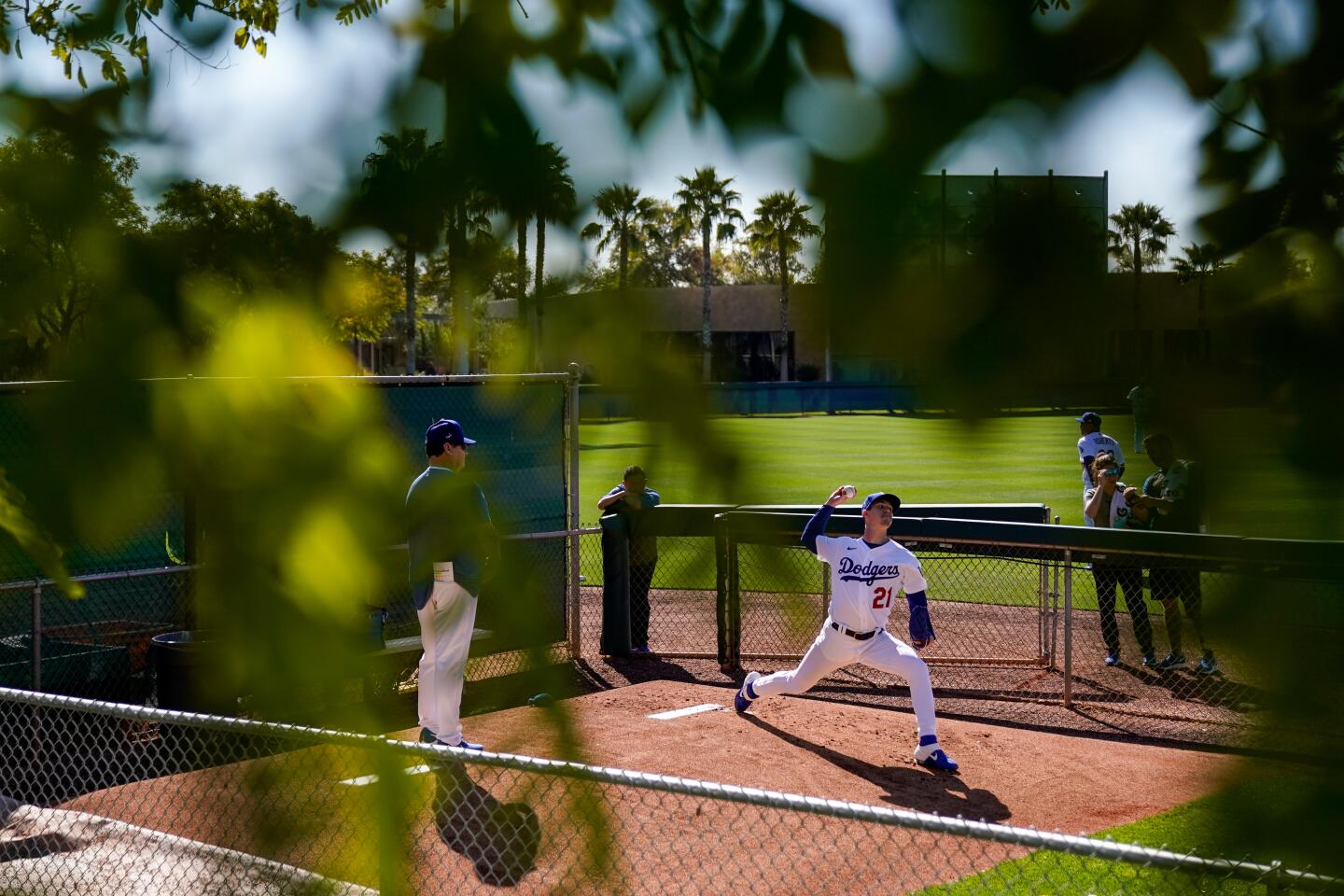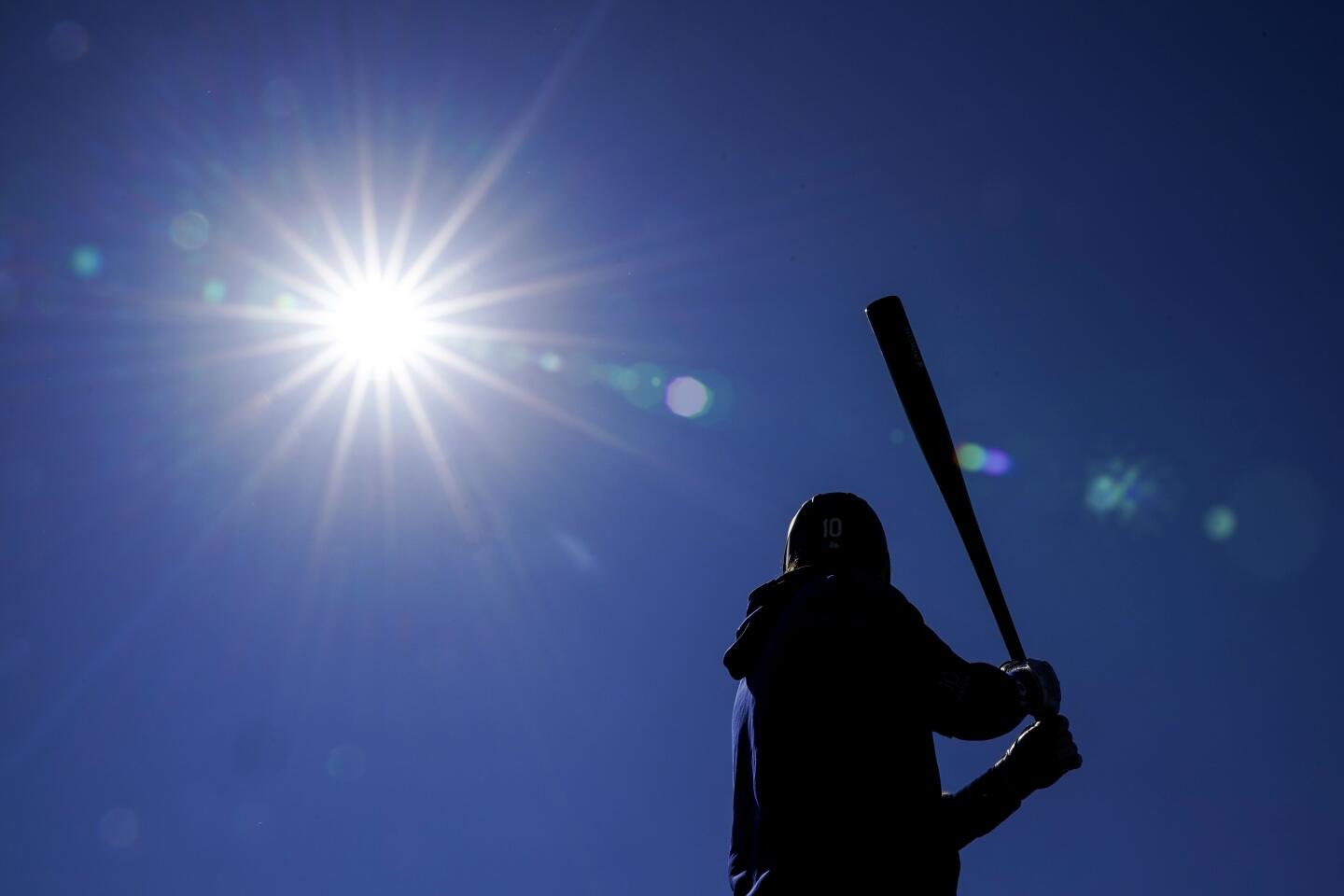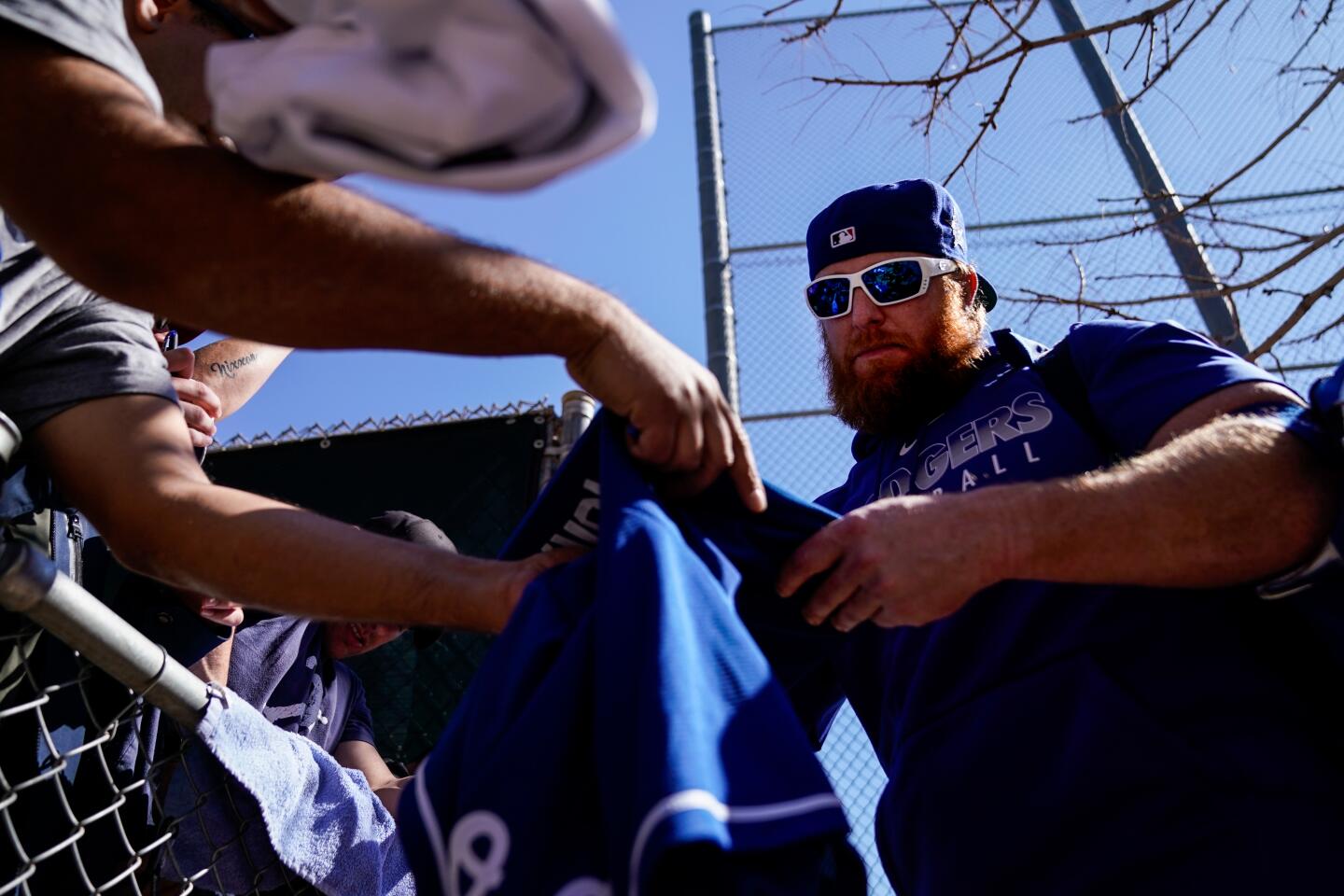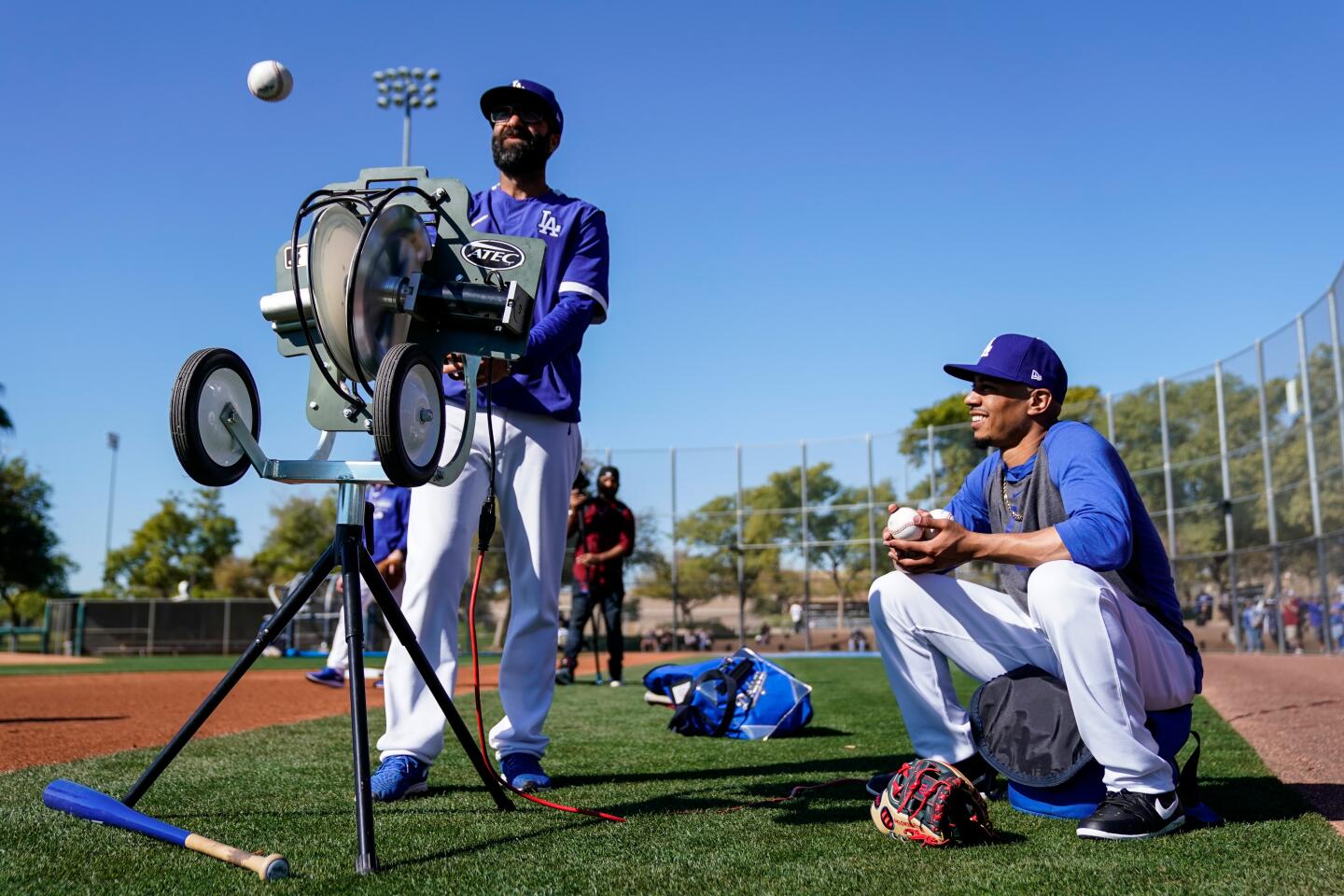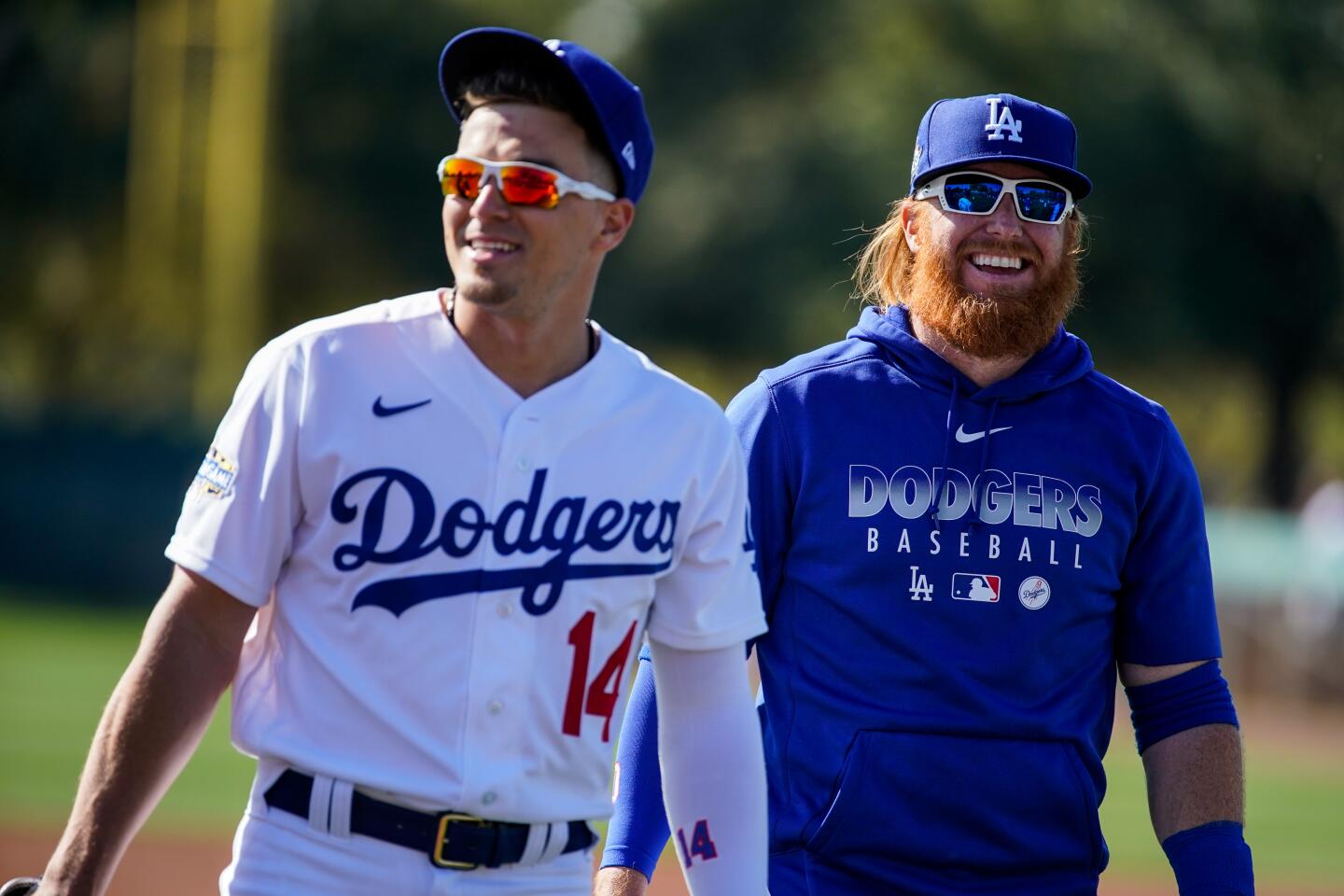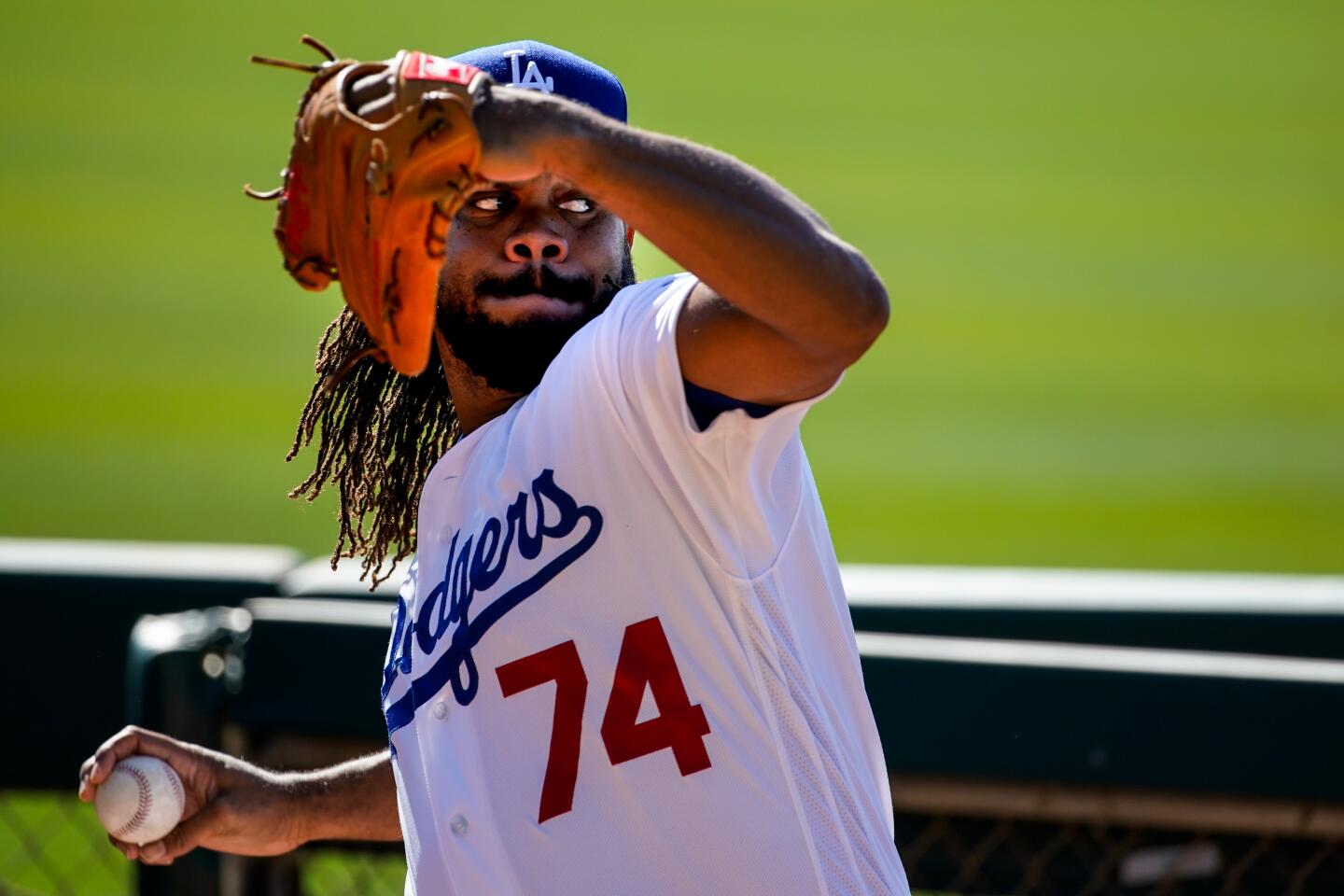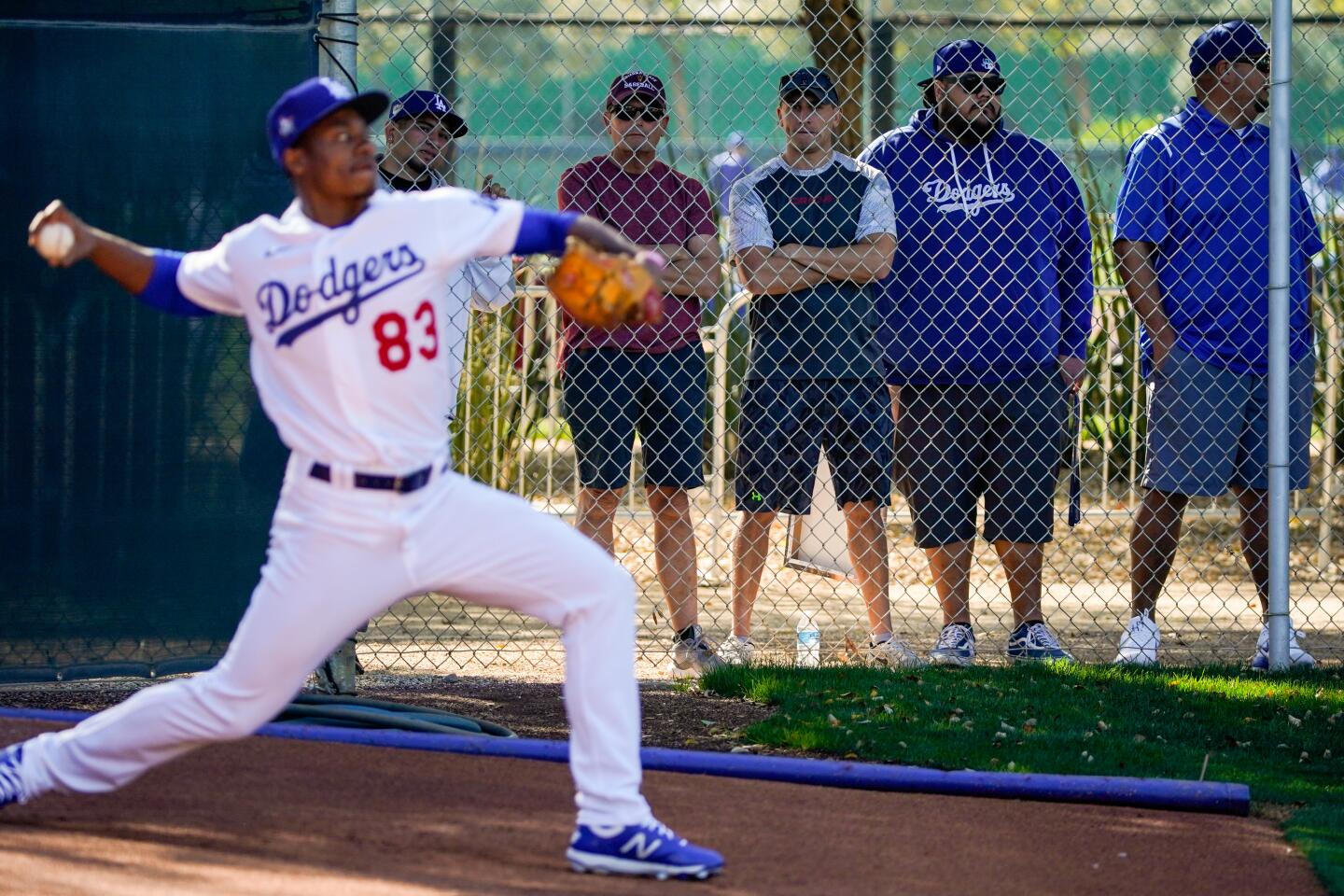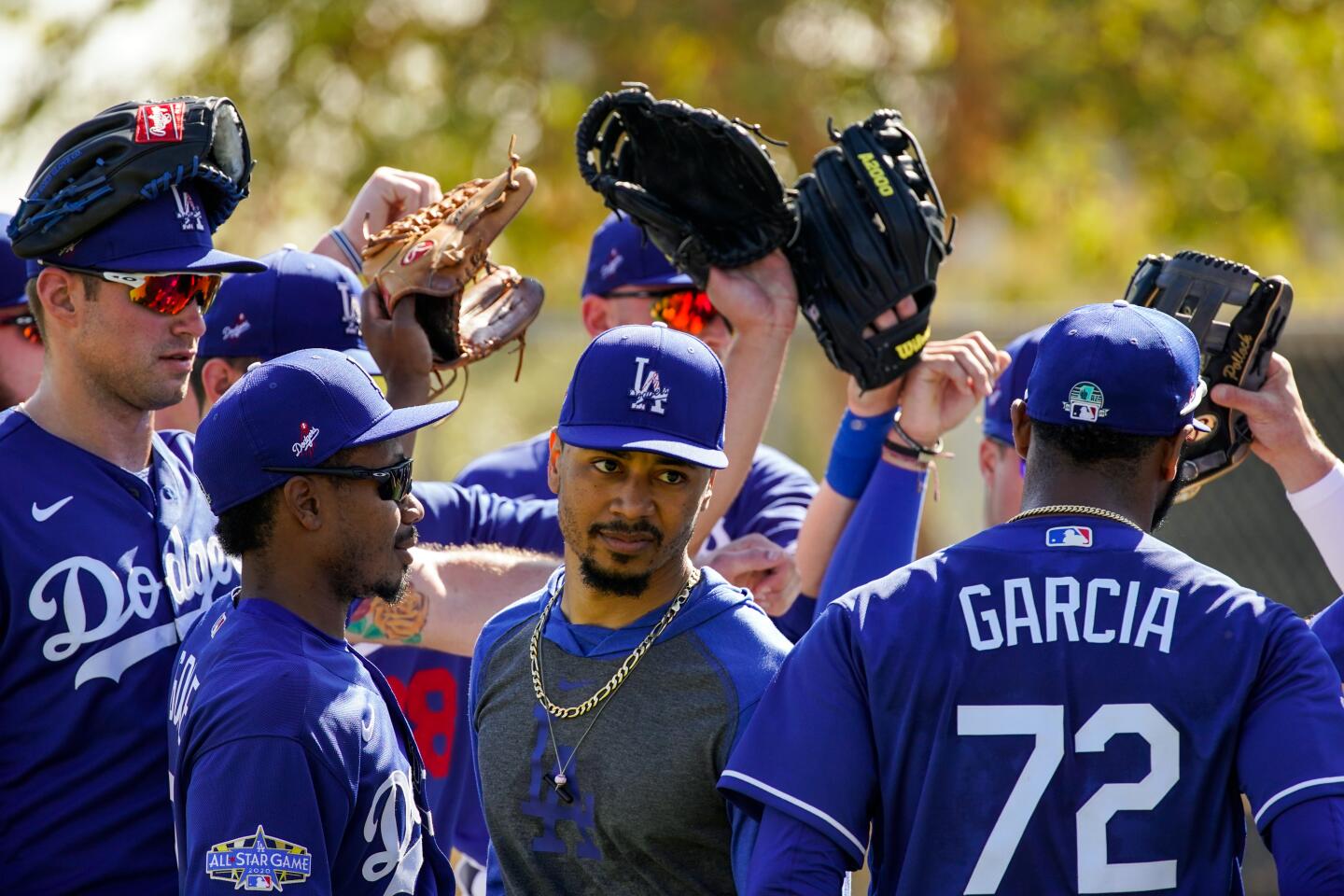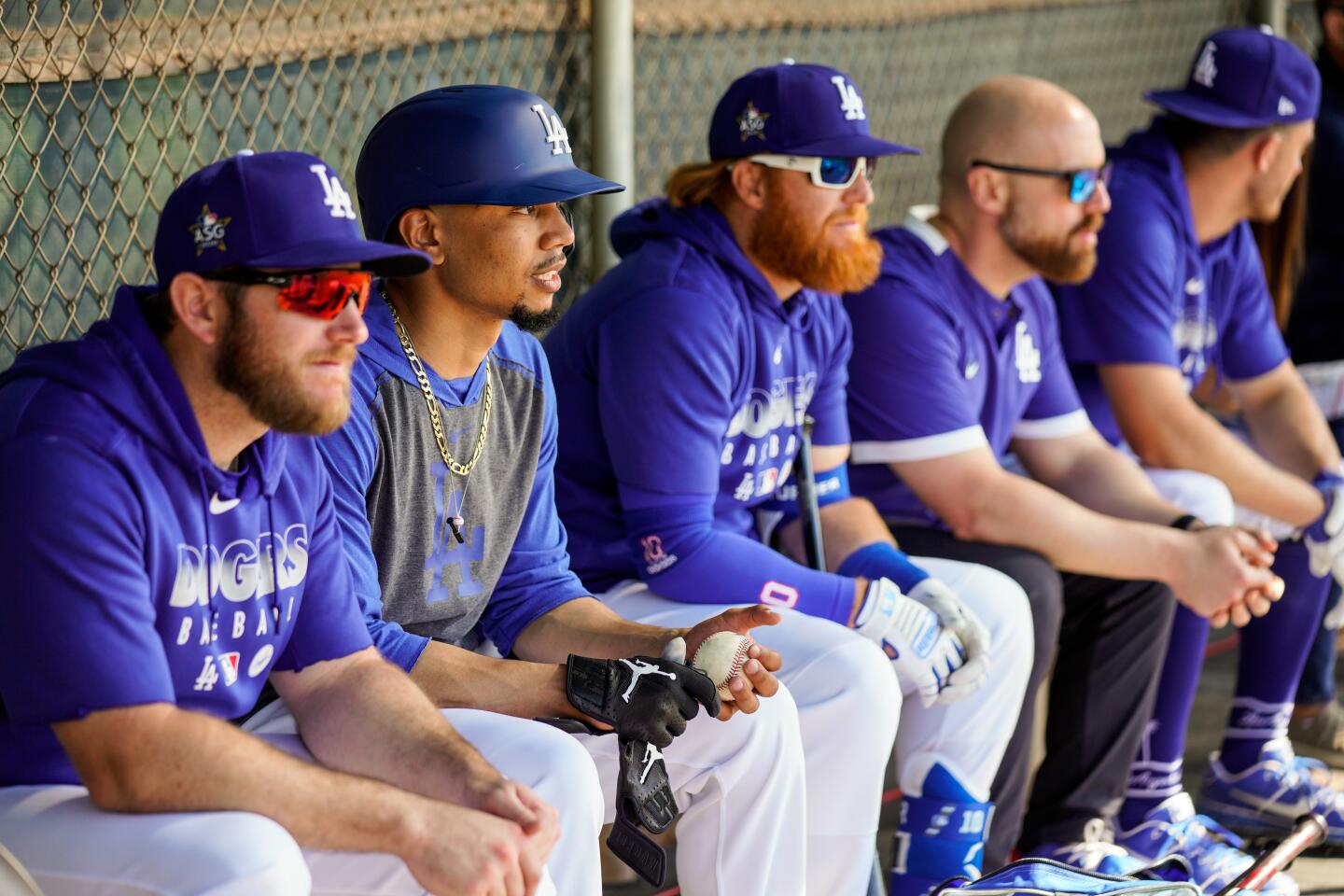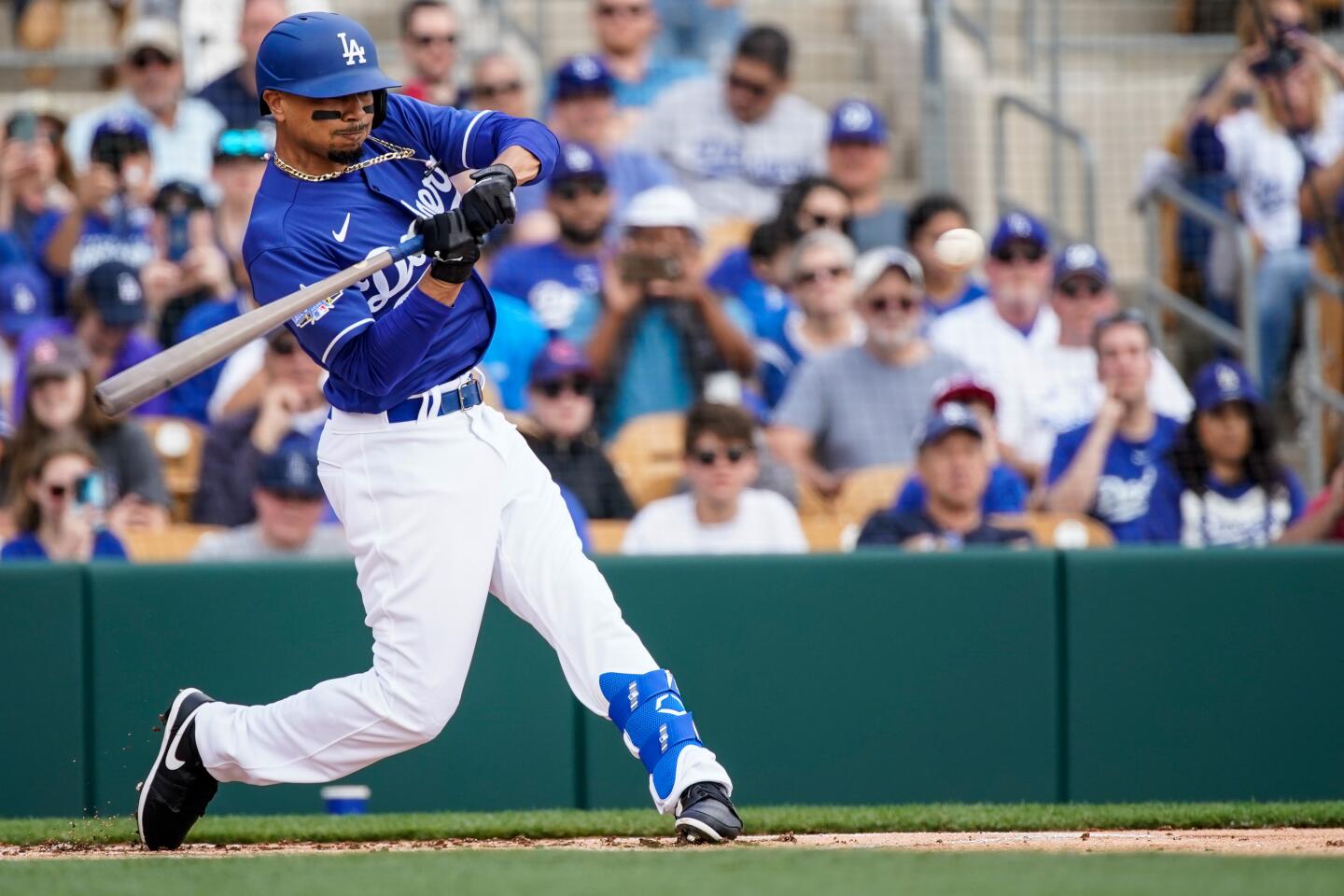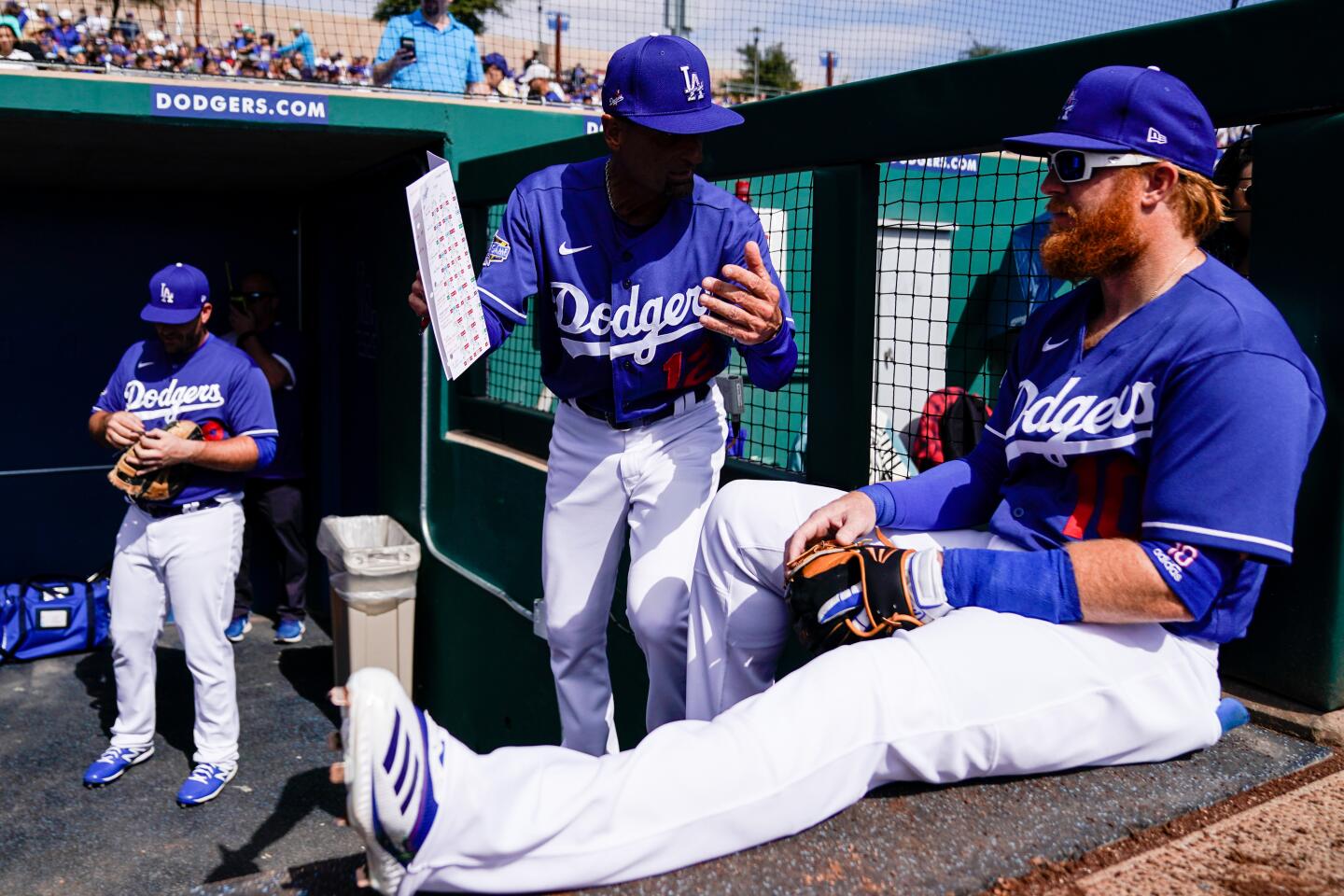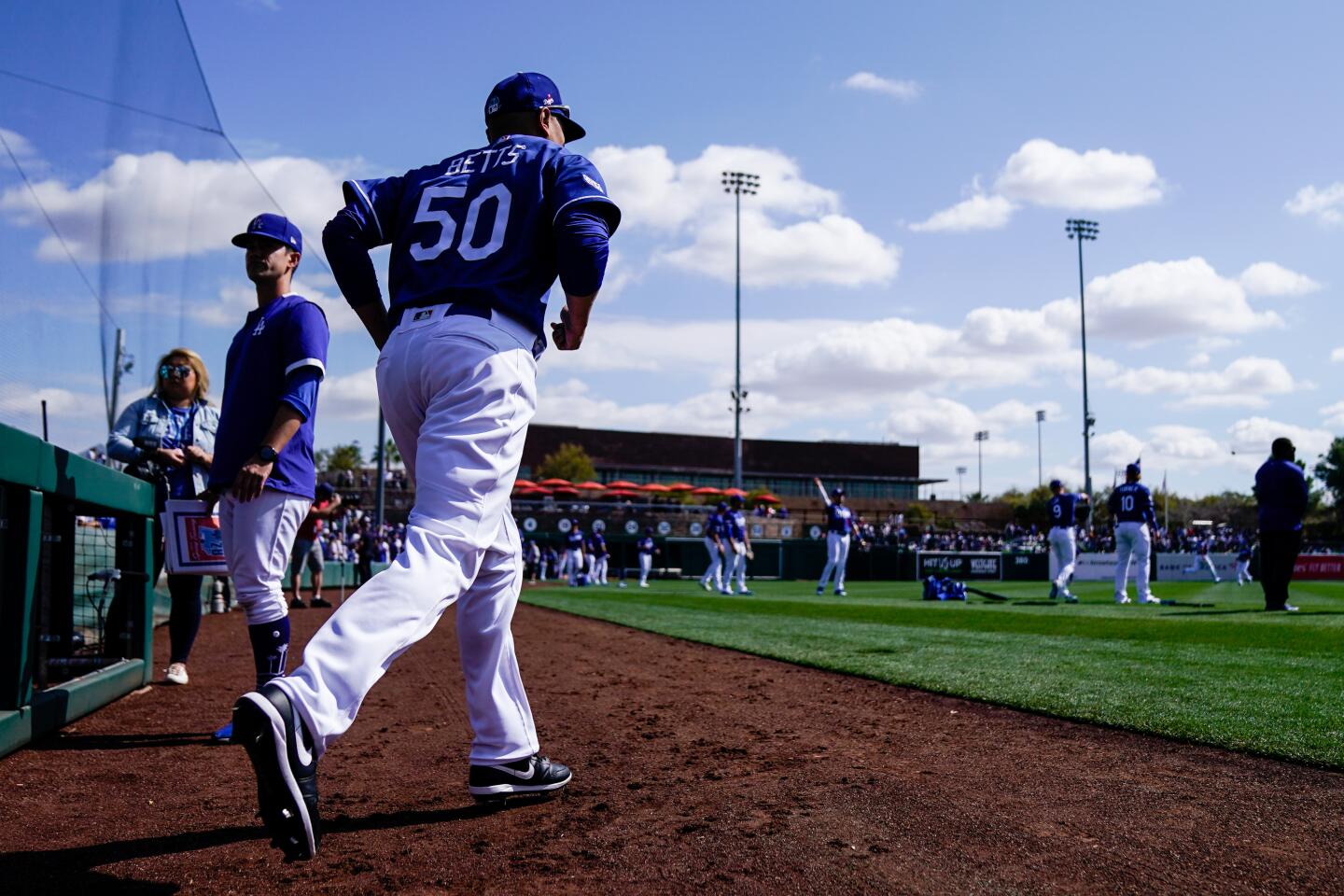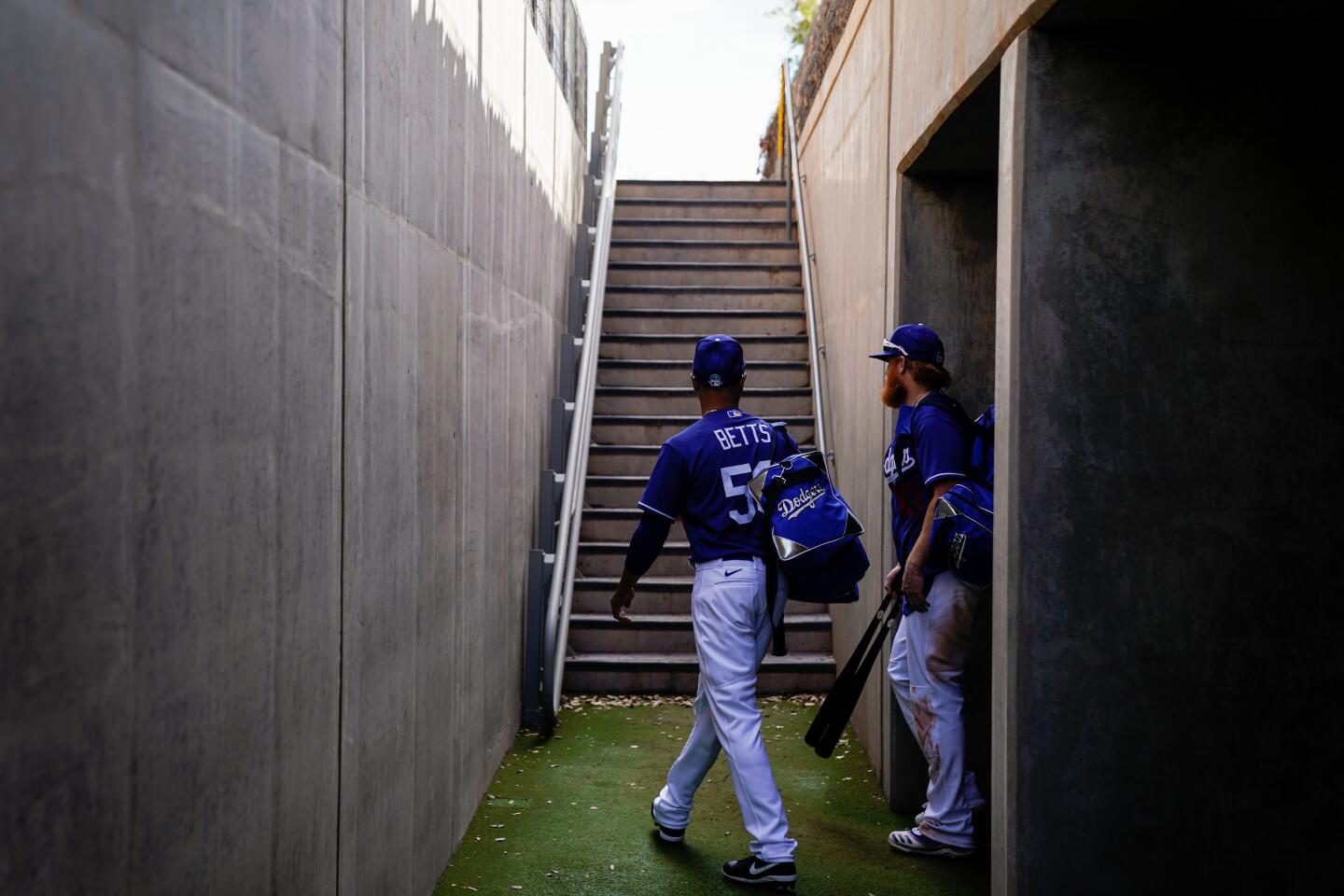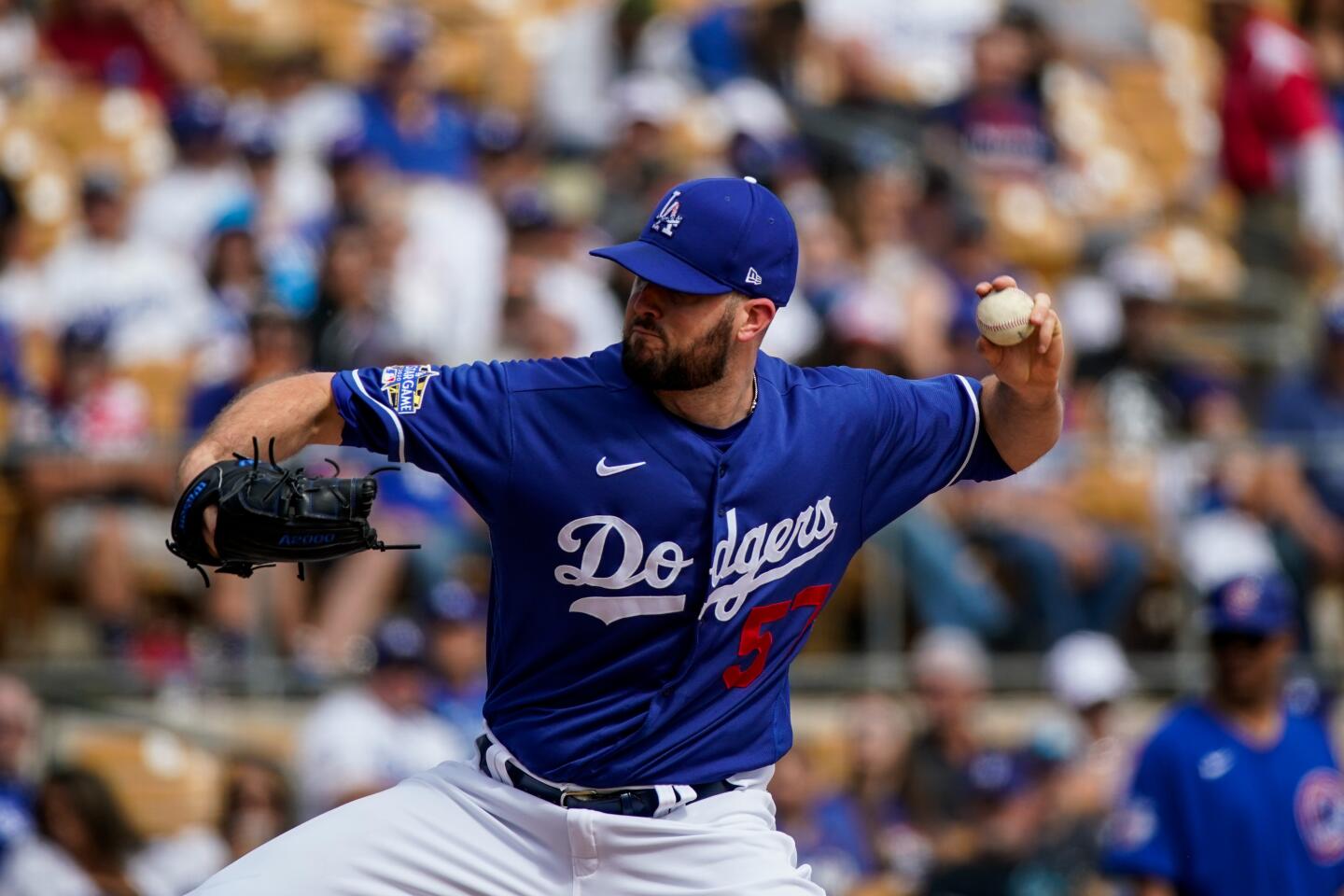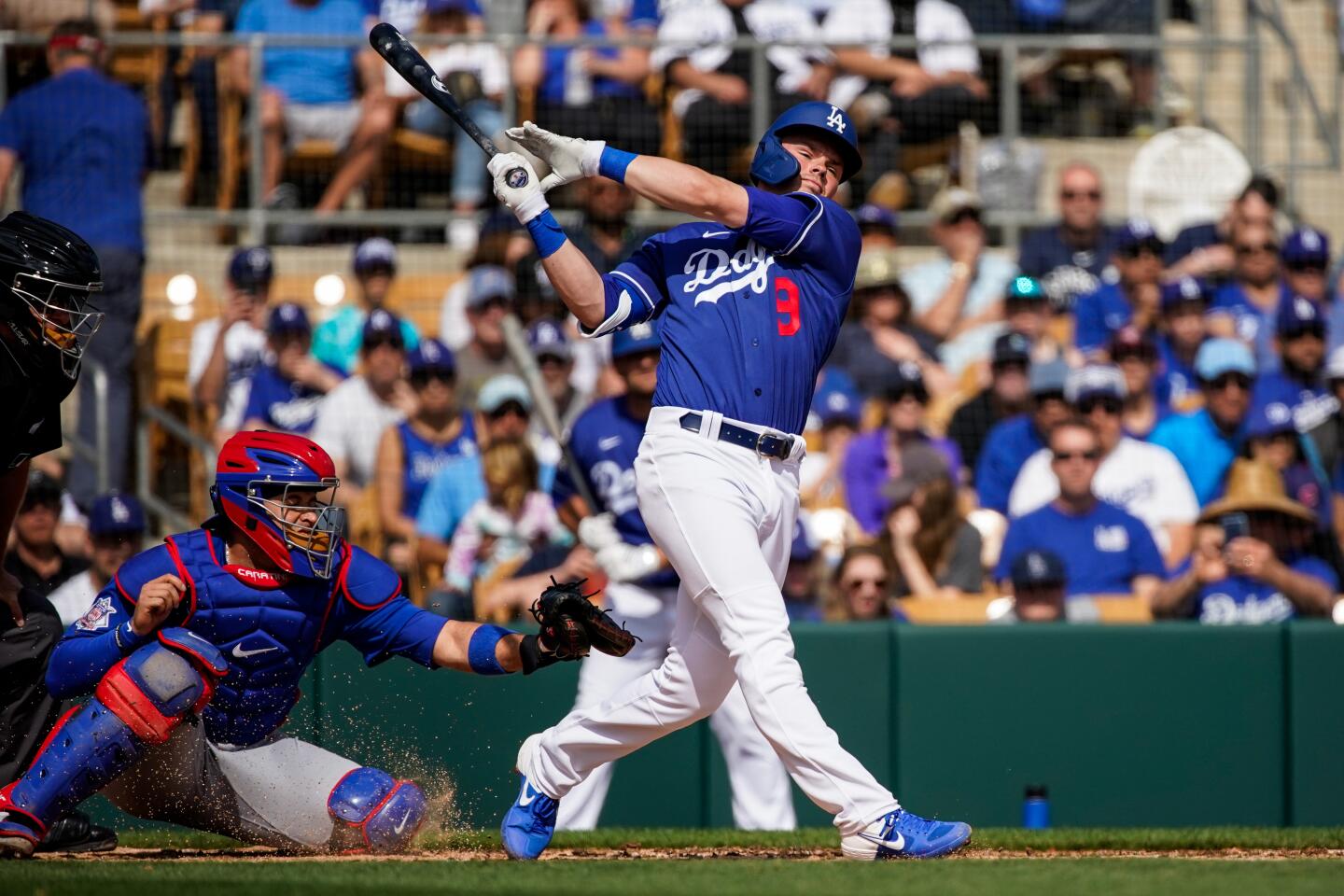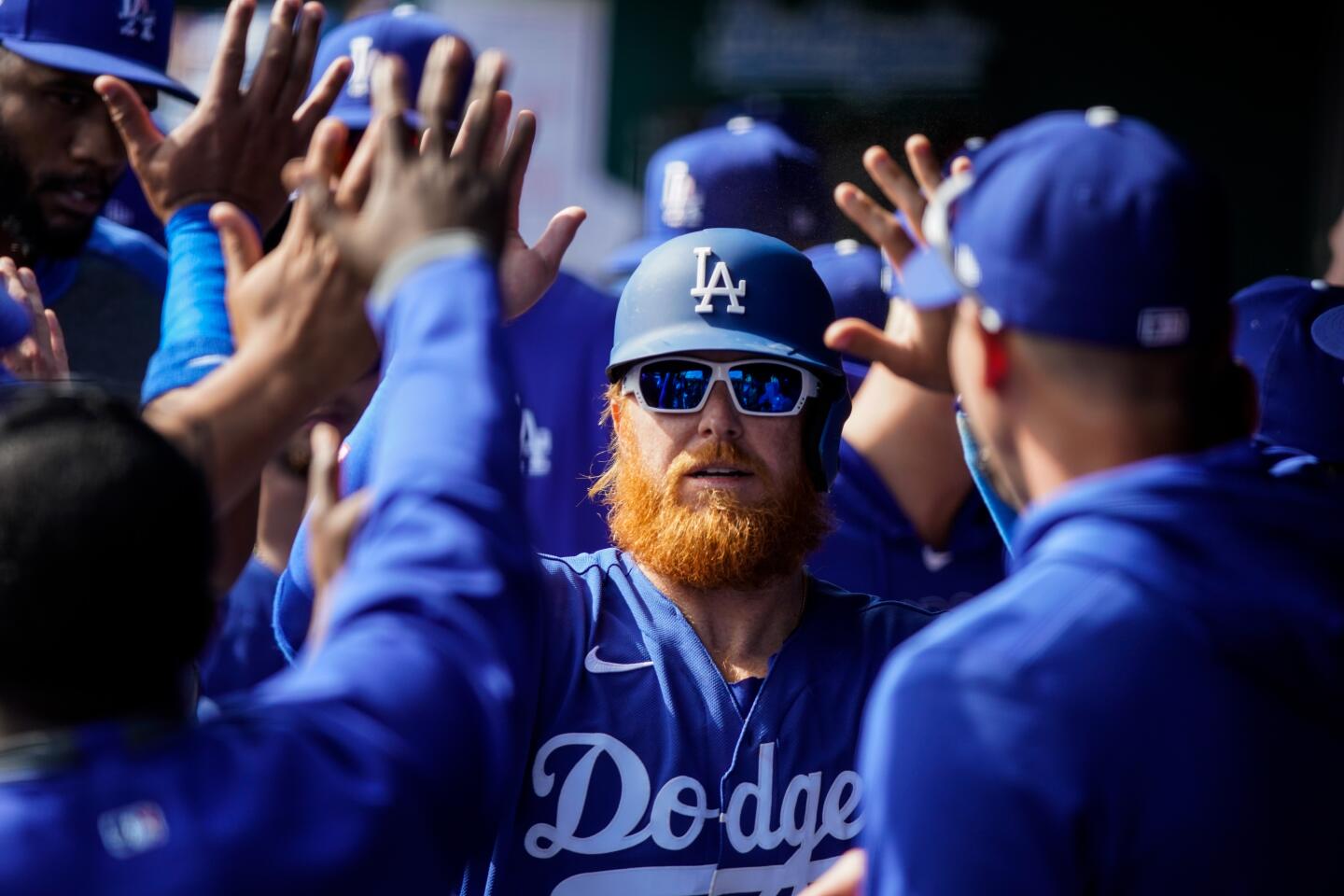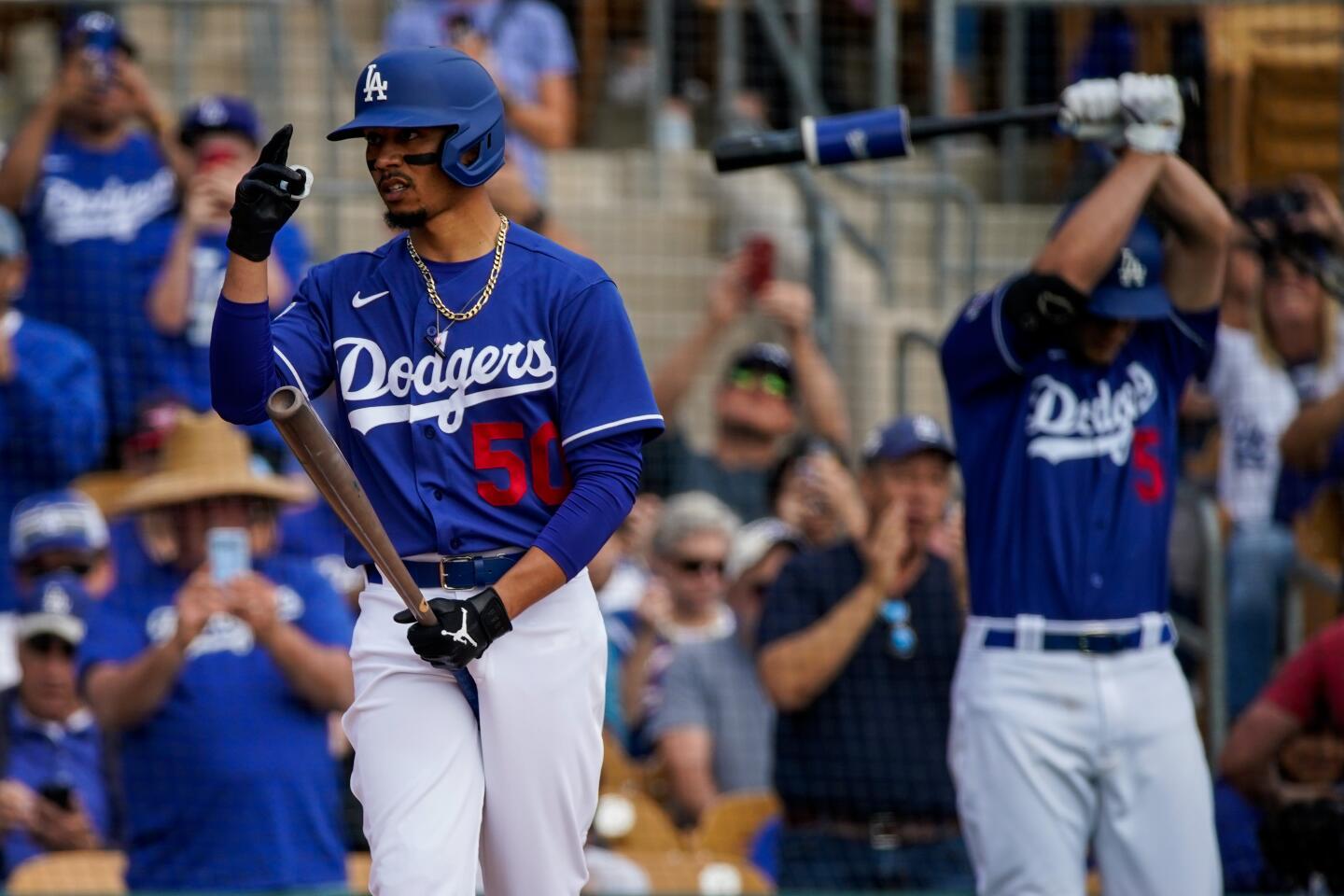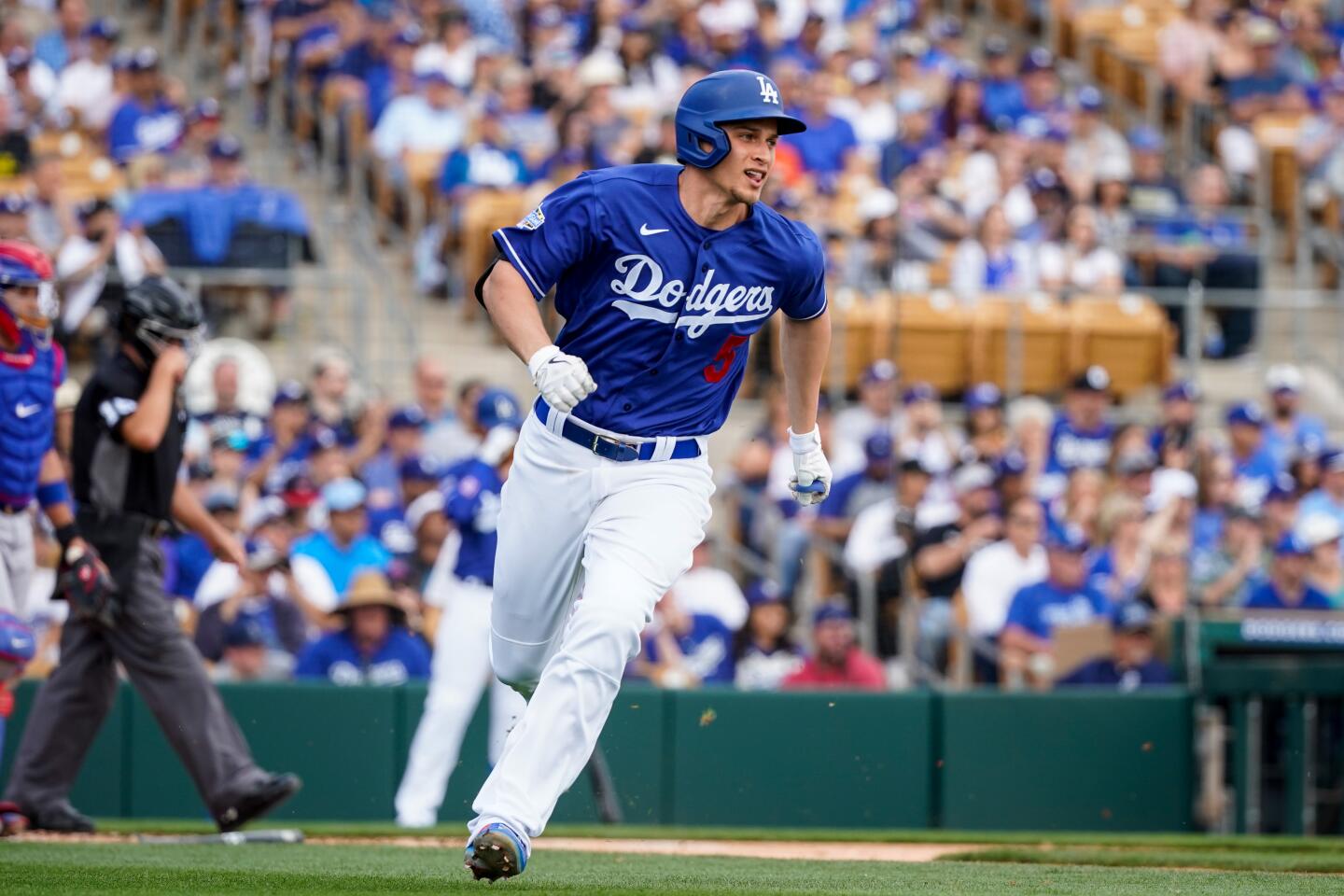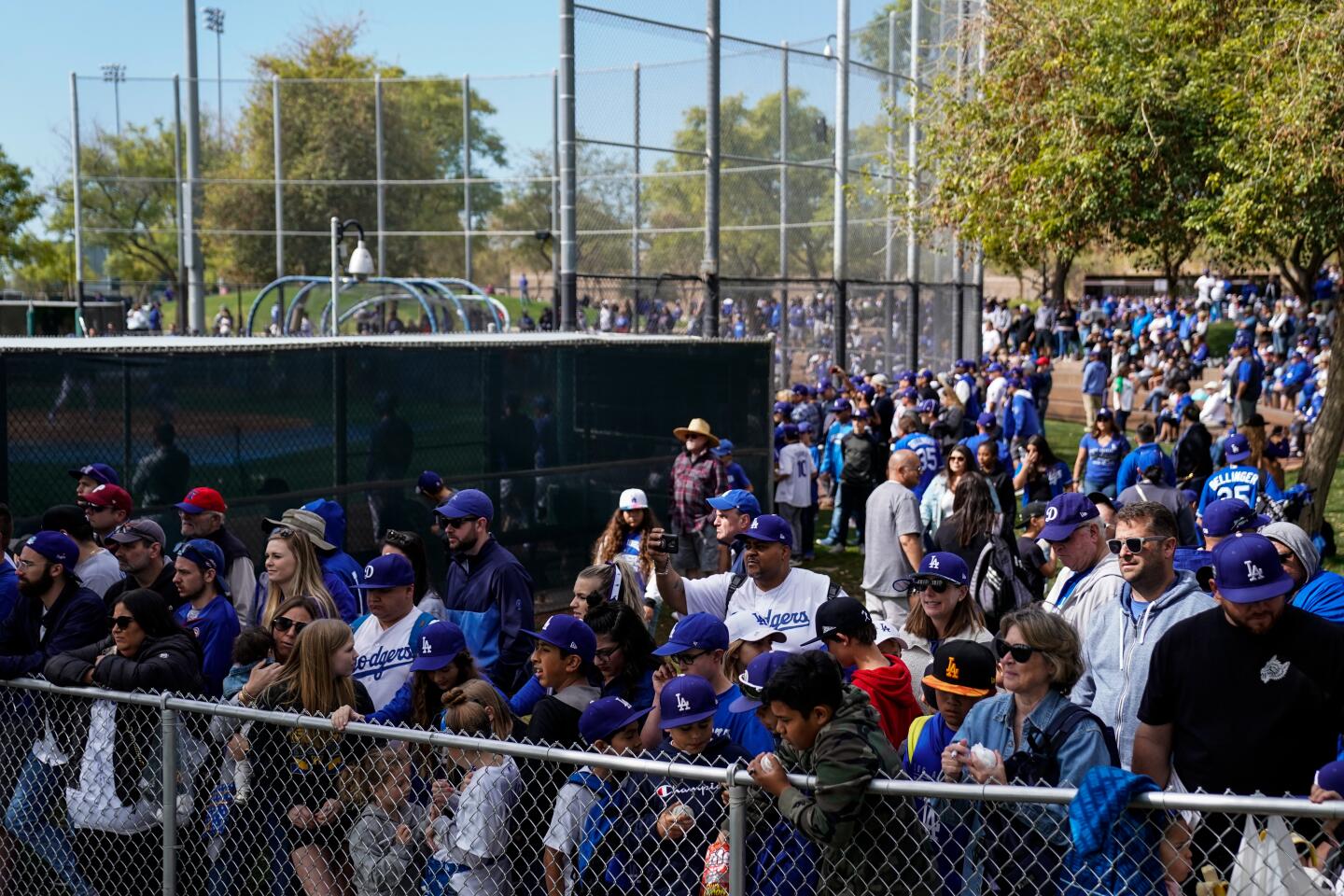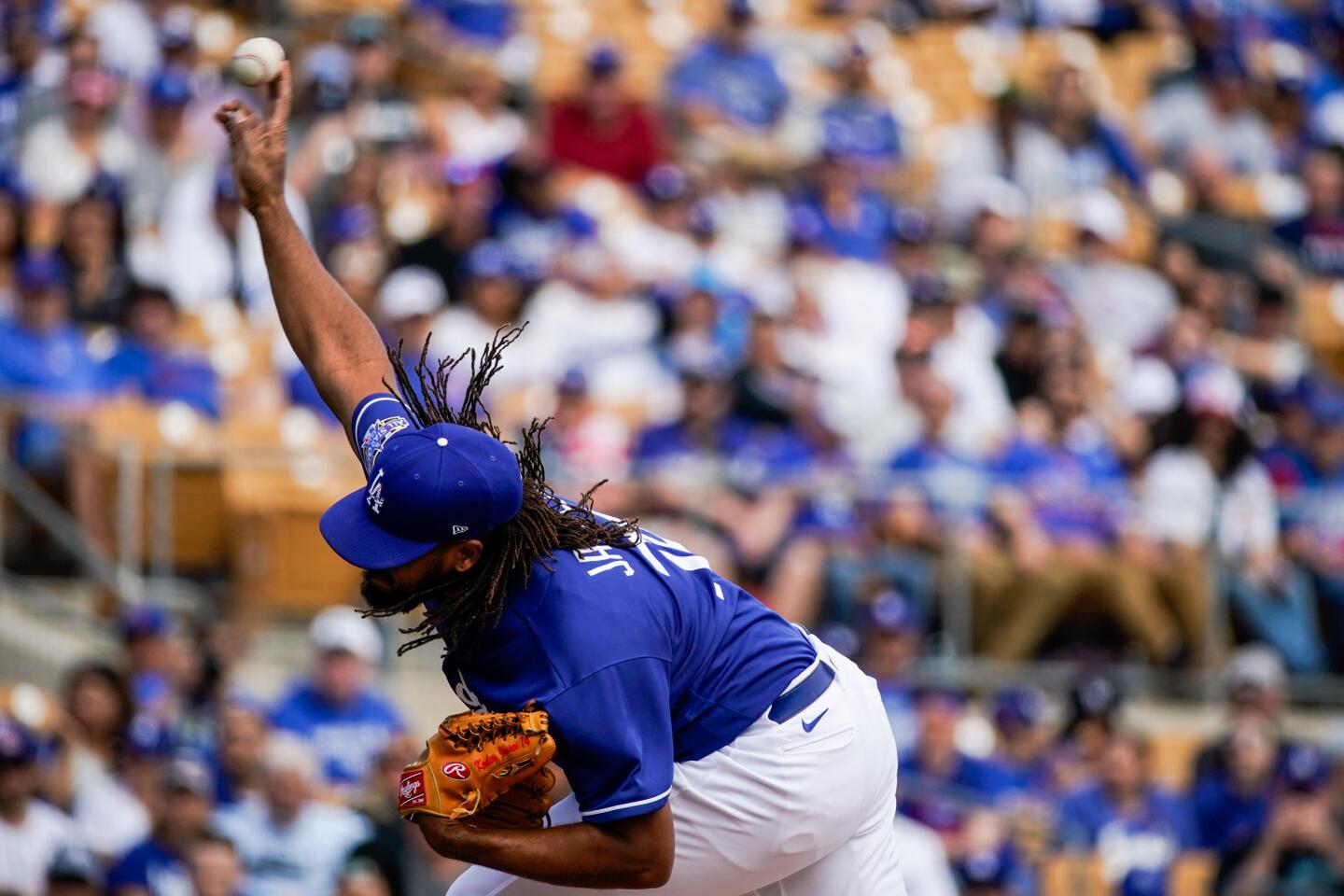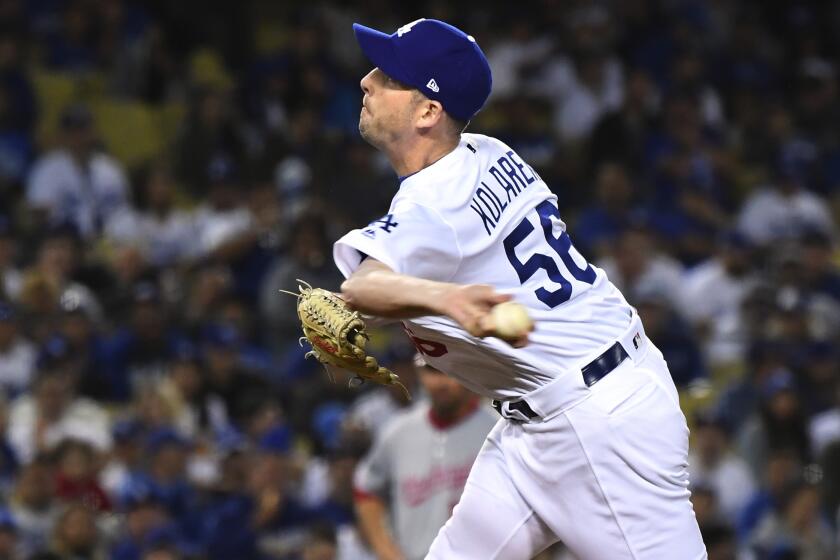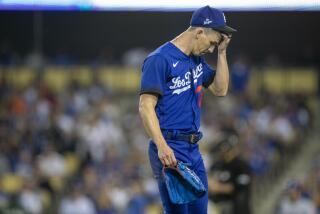Dodgers split on whether MLB should eliminate access to video during games
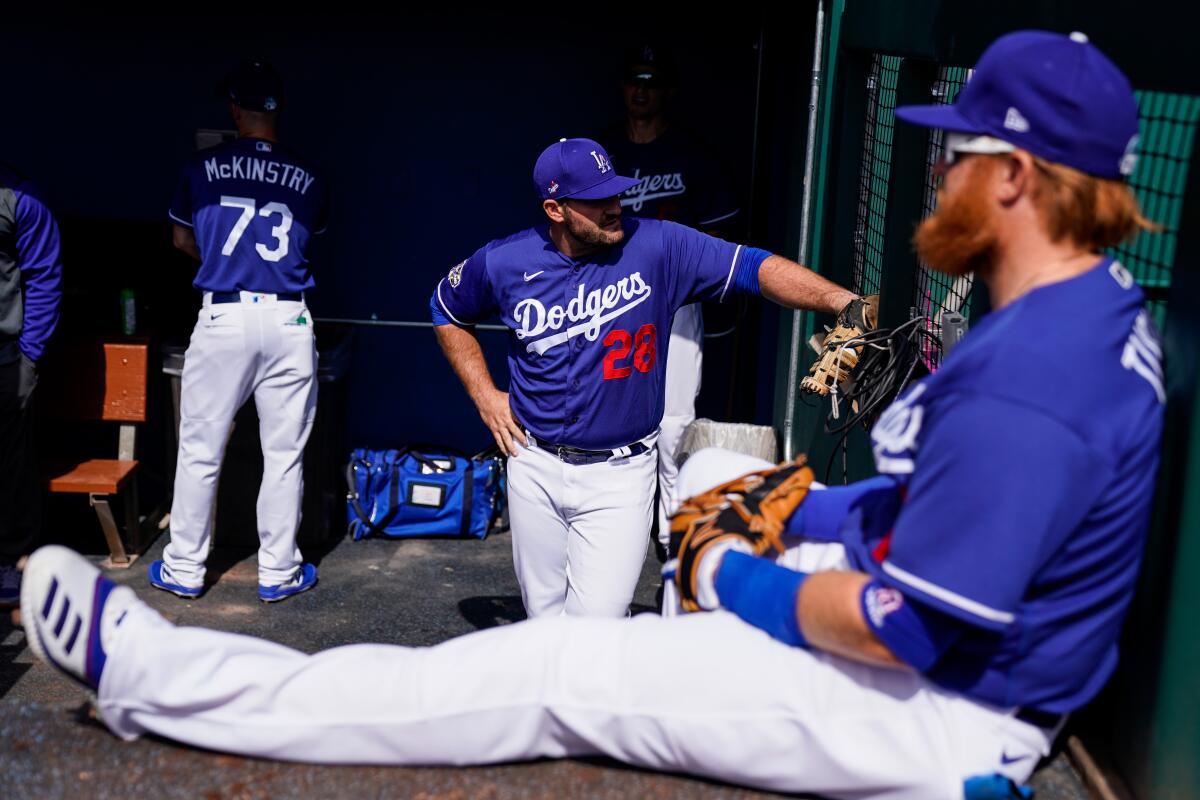
- Share via
PHOENIX — Corey Seager, Dodgers shortstop and obsessive swing artist, is usually found carrying a bat at the ballpark. His intense drive to perfect his hitting mechanics is a never-ending, around-the-clock pursuit. The vocation includes regularly studying video of himself at the plate — before, after and often during games.
Seager estimated he spends 65% to 70% of every inning of every home game in a video room, next to the dugout at Dodger Stadium, to examine his plate appearances. Did he get his front foot down in time? Was his swing balanced? Were the pitches where he thought they were?
He said he can consistently absorb his findings and implement changes from at-bat to at-bat, self-correcting to improve himself and help the Dodgers win. Video is a tool he’s come to rely on to become successful at the highest level in this age of technology sweeping the sport. A month before the 2020 season begins, however, the tool may be on the verge of abolition.
Limiting, if not completely eliminating, player access to video during games has emerged as a likelihood in the wake of the Houston Astros’ sign-stealing scandal and Major League Baseball’s ongoing investigation into allegations the Boston Red Sox broke rules to steal signs in 2018. Seager isn’t a fan of the proposed measure, and he isn’t alone.
“I would definitely be a proponent of it not going away,” Seager said.
Julio Urías bounced between the starting rotation and the bullpen last season, but Dodgers manager Dave Roberts sees the 23-year-old as a starter in 2020.
MLB Commissioner Rob Manfred last week said the league is discussing with the players’ association how to police video access during games. He believes the league needs “to drastically restrict in-game access by playing personnel to video.” He communicated that opinion in a meeting with Cactus League managers. Dodgers manager Dave Roberts emerged convinced the league will eliminate access to video by the start of the season.
“It just has caused a lot of problems,” Manfred said. “And I think a really across-the-board restriction on video will help send a message to our fans that it’s really important for this institution right now that we’re serious about cleaning this up.”
The Astros and Red Sox cases are different. The Astros were accused of using a camera in center field that focused on the opposing catcher to pick up his signs at home games in 2017 and into the 2018 season. The feed would transmit to a monitor behind their dugout and someone would bang a trash can to relay the type of pitch to the Astros’ hitter. The scheme allowed them to steal signs in real time without a runner at second base.
The Red Sox investigation centers on their alleged illicit use of the video replay room in 2018. That system required a base runner and was less streamlined. MLB is expected to impose a lighter punishment than the sanctions Houston received last month. Manfred said a report and sanctions will be made public by the end of this week.
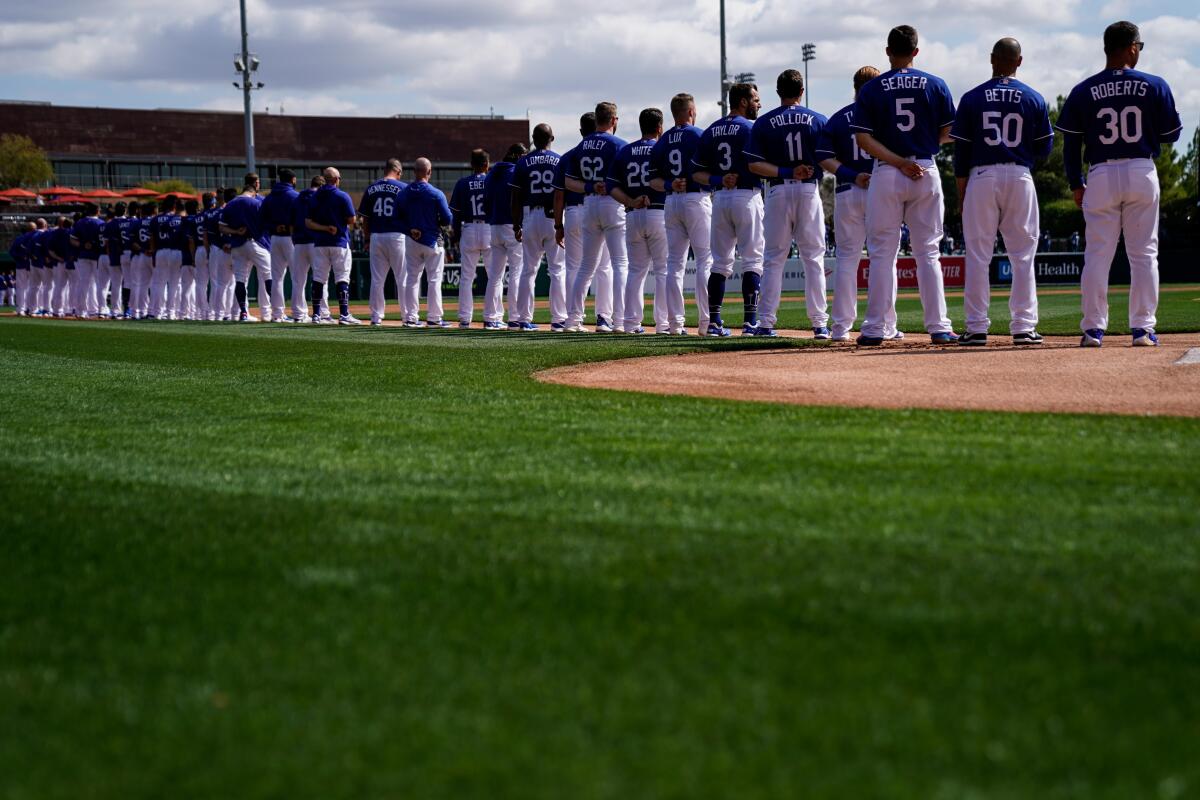
Both the 2017 Astros and 2018 Red Sox defeated the Dodgers in the World Series. The fallout from the Astros’ scandal has evoked strong feelings within the Dodgers organization. Most of the industry considers the Astros’ cheating egregious and their apologies empty.
Dodgers players fronted the charge in criticizing the perpetrators for the cheating and the commissioner for the penalties levied. Several Dodgers have bluntly spoken their minds. Everyone still around from the 2017 team wonders what would’ve happened if the Astros hadn’t cheated. And they are dissatisfied with the punishment.
But there isn’t a consensus within the Dodgers on the direction the league should take regarding in-game video access. Some are for completely eliminating it. Others want the league to pursue other avenues to prevent cheating. A few are indifferent.
Pitcher Ross Stripling reasoned that the game was played for a century without constant video use. Now, he sometimes looks around and finds the dugout empty because everyone else is watching video or hitting in the tunnel. Outfielder A.J. Pollock wondered if cutting off the video room could liberate hitters from overthinking.
Justin Turner argued that removing access would also improve player-umpire relations. His rationale: Players frequently head to the video room to replay a disputed strike call and often get angry even if the pitch was barely off the plate. The heightened scrutiny seeps into the next at-bat, building tension, which occasionally erupts.
“I think, as an old-school guy, I don’t think that’s necessary,” the 35-year-old Turner said. “I think guys can wait until after the game to go back and watch their ABs.”
A few colleagues agreed with Turner. But a subset of Dodgers still oppose swinging the pendulum all the way back. Max Muncy pointed to rules the league has imposed since video shenanigans began surfacing in 2017. For example, MLB first installed officials to oversee every video replay room during the 2018 postseason and had all game broadcasts in clubhouses run on an eight-second delay beginning last season.
“When technology was implemented, I don’t think MLB or the players really understood the ramifications that it could potentially have, of being able to get things in real time like that,” Clayton Kershaw said. “But now that we do, and we’ve unfortunately learned the hard way, I don’t think we have to go completely crazy and eliminate everything.”
Walker Buehler maintained that eliminating access to broadcasts in the clubhouse would negatively affect starting pitchers. Instead of going into the clubhouse or training room after pitching an inning, they would have to remain in the dugout for their team’s third out before heading back to the mound because they have a limited time to warm up. Buehler said the time limit, implemented last season, already sped him up.
Cody Bellinger wondered whether an organization would dare use video to cheat again.
“I don’t think anyone will anymore, right?” he said.
Adam Kolarek is confident he can shed the lefty specialist reputation he developed with the Dodgers last season and be multiple-outs reliever.
Andrew Friedman, the Dodgers’ president of baseball operations, said he only wants the league to ensure a level playing field and allow clubs to continue using video for player development outside of games. He doesn’t believe those benefits and preserving the integrity of the sport are mutually exclusive.
Eliminating access to the video room would not necessarily eradicate the use of in-game technology. Batters, for example, use iPads approved by MLB to examine scouting reports and watch short videos in the dugout. Tablets are also available to pitchers in the bullpen.
Whatever the league decides will displease a faction. In-game video use has become embedded across the sport, from the minors to the highest level. Withdrawing access would require routine changes for players across the majors. Some would transition easier than others. Some, such as Seager, hope they won’t have to worry about it.
“Obviously you’d have to adjust, I guess,” Seager said. “It could be no choice.”
More to Read
Are you a true-blue fan?
Get our Dodgers Dugout newsletter for insights, news and much more.
You may occasionally receive promotional content from the Los Angeles Times.

